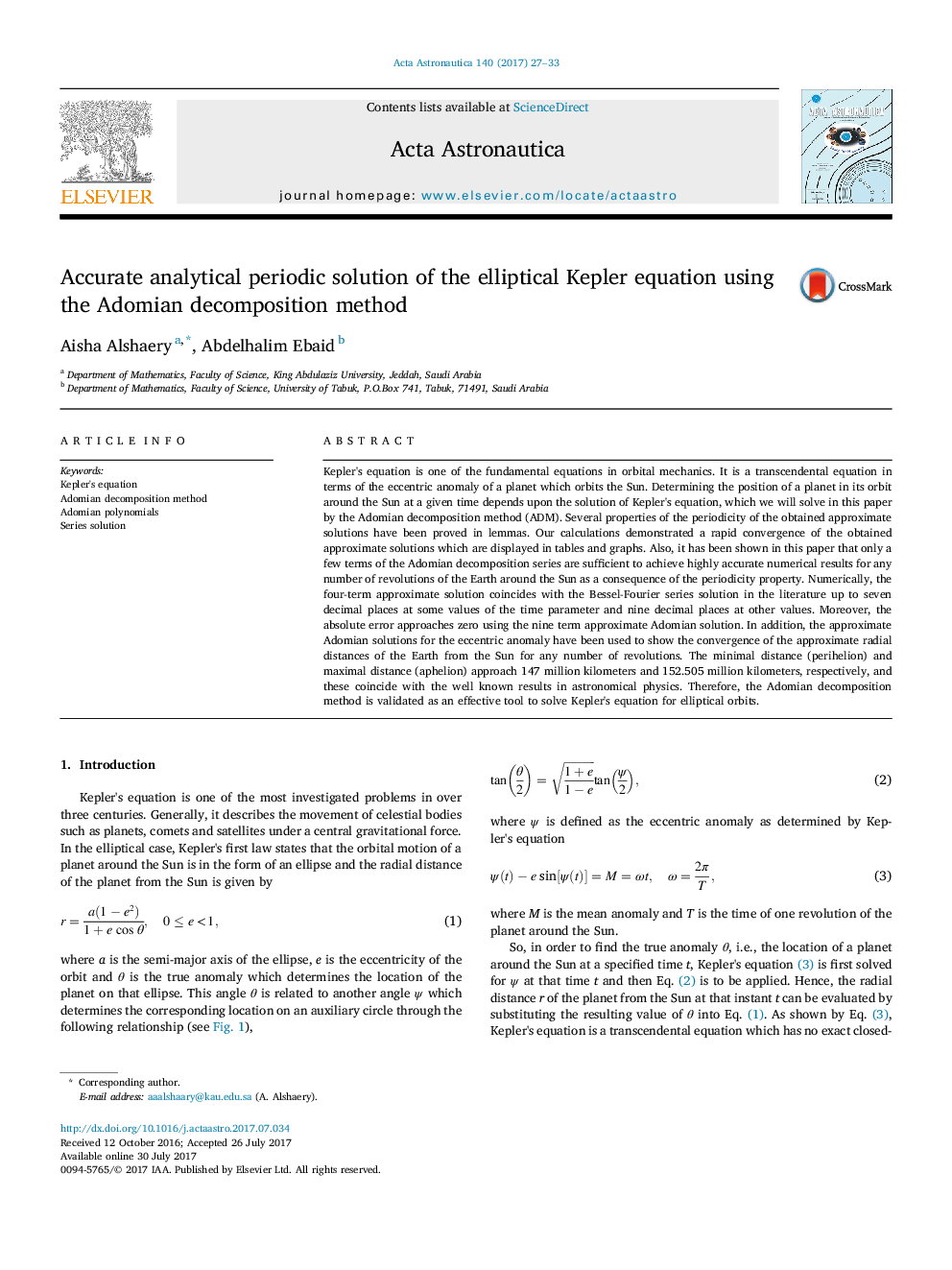| Article ID | Journal | Published Year | Pages | File Type |
|---|---|---|---|---|
| 5472093 | Acta Astronautica | 2017 | 7 Pages |
Abstract
Kepler's equation is one of the fundamental equations in orbital mechanics. It is a transcendental equation in terms of the eccentric anomaly of a planet which orbits the Sun. Determining the position of a planet in its orbit around the Sun at a given time depends upon the solution of Kepler's equation, which we will solve in this paper by the Adomian decomposition method (ADM). Several properties of the periodicity of the obtained approximate solutions have been proved in lemmas. Our calculations demonstrated a rapid convergence of the obtained approximate solutions which are displayed in tables and graphs. Also, it has been shown in this paper that only a few terms of the Adomian decomposition series are sufficient to achieve highly accurate numerical results for any number of revolutions of the Earth around the Sun as a consequence of the periodicity property. Numerically, the four-term approximate solution coincides with the Bessel-Fourier series solution in the literature up to seven decimal places at some values of the time parameter and nine decimal places at other values. Moreover, the absolute error approaches zero using the nine term approximate Adomian solution. In addition, the approximate Adomian solutions for the eccentric anomaly have been used to show the convergence of the approximate radial distances of the Earth from the Sun for any number of revolutions. The minimal distance (perihelion) and maximal distance (aphelion) approach 147 million kilometers and 152.505 million kilometers, respectively, and these coincide with the well known results in astronomical physics. Therefore, the Adomian decomposition method is validated as an effective tool to solve Kepler's equation for elliptical orbits.
Related Topics
Physical Sciences and Engineering
Engineering
Aerospace Engineering
Authors
Aisha Alshaery, Abdelhalim Ebaid,
